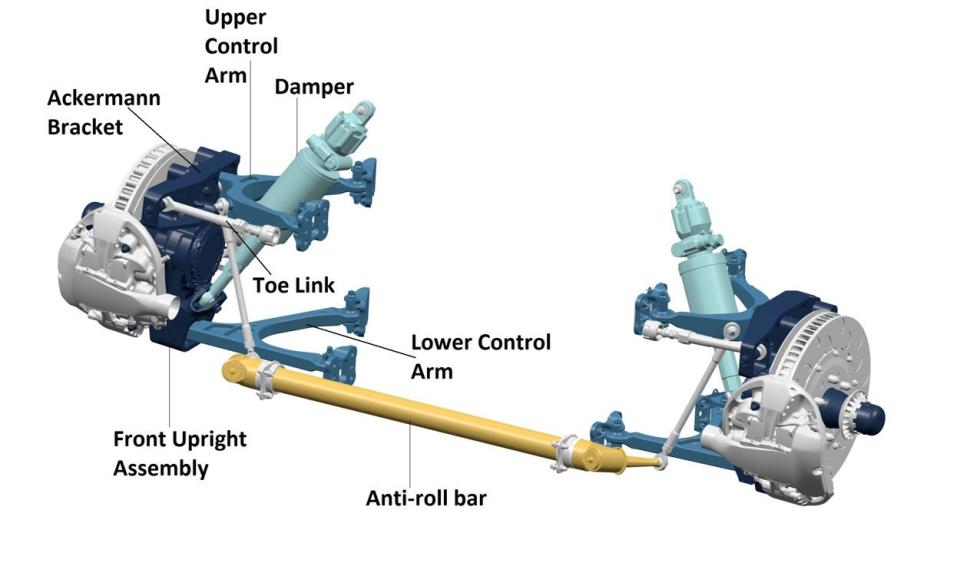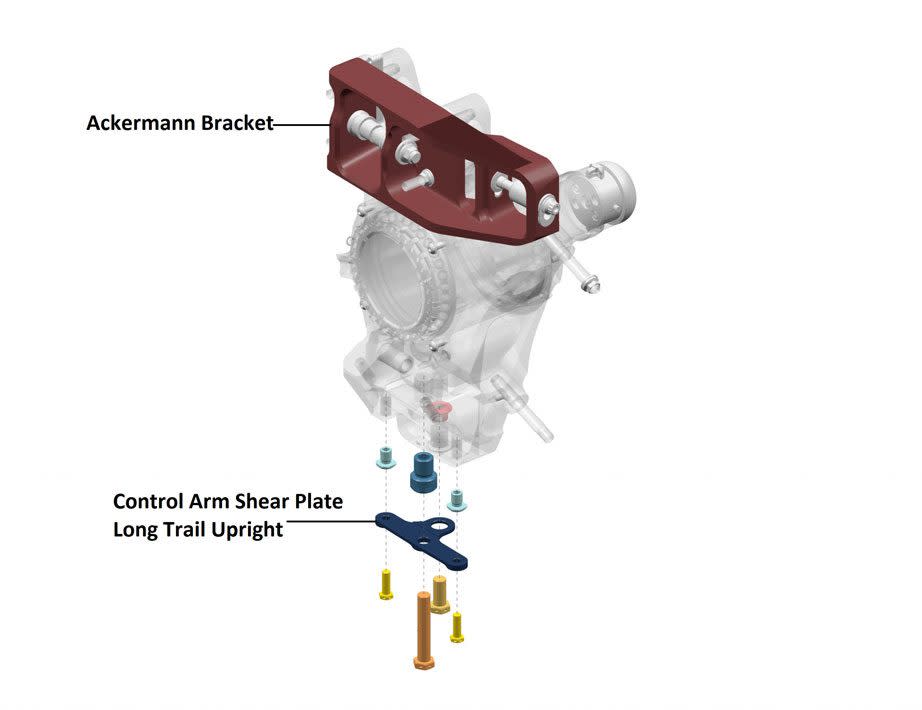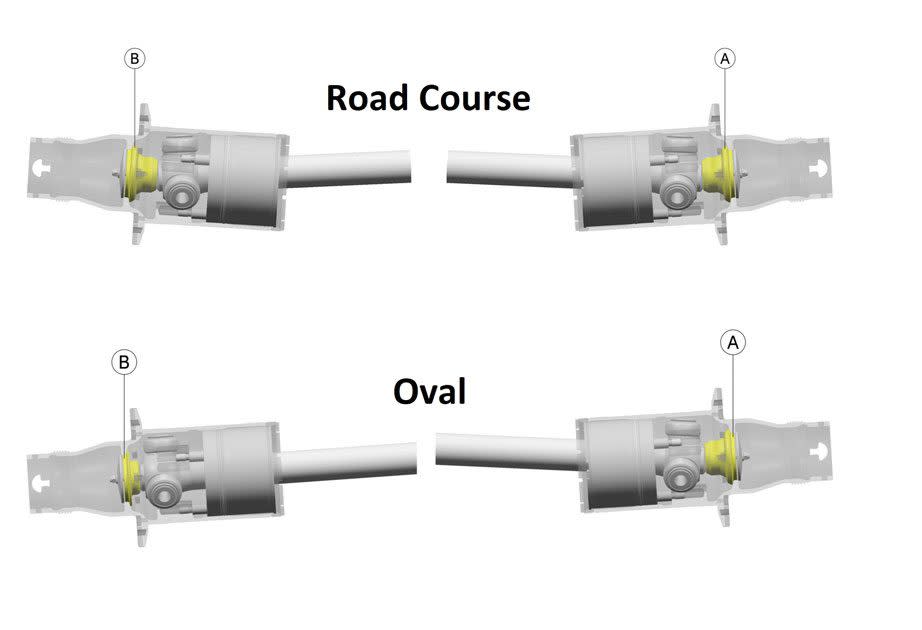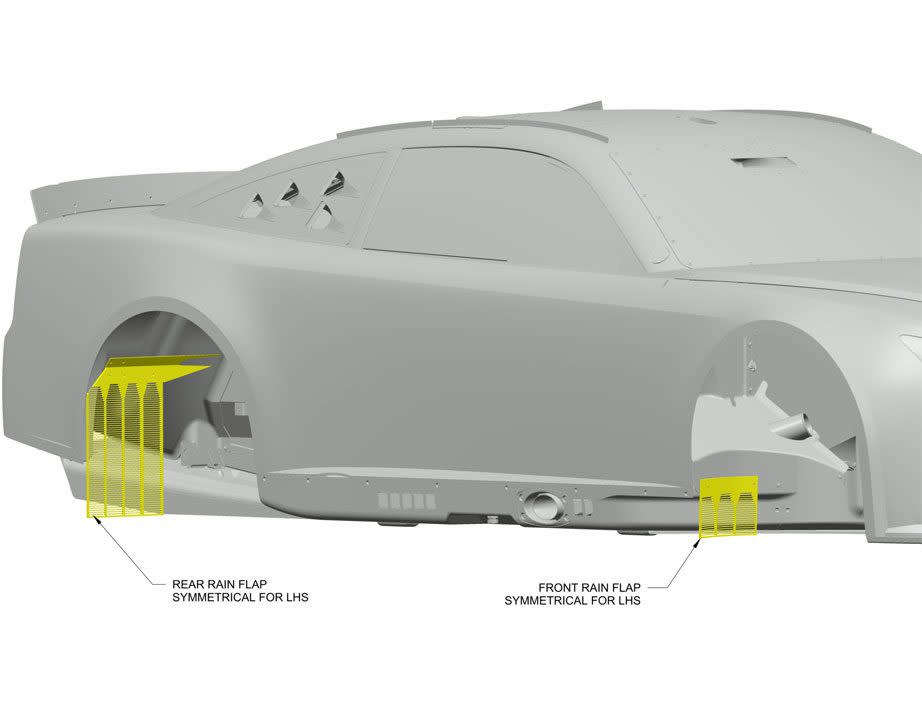Next Gen analysis: How new features impact flexibility of road-course setups
Editor’s note: Bozi Tatarevic is a professional racing mechanic and pit crew member. He will provide technical analysis for NASCAR.com throughout the 2022 season.
NASCAR heads back to the Circuit of The Americas this weekend and the anticipation is high as the NASCAR Next Gen car makes its road-course debut after starting the season on a variety of ovals. This will be a big test for the new Cup car as teams will look to take advantage of some of the new features, such as the independent rear suspensions and increased braking capacity that make it more compatible with courses where they will turn both left and right.
While the cars will have drastically different suspension setups from what we’ve seen over the last few weeks, the base cars will not be based on unique chassis as we‘ve seen in the past and instead will have different pieces bolted onto the same suspension uprights that teams have used on the ovals this year.
RELATED: More NASCAR 101
The most notable and visible difference between oval racing and road-course racing is camber of the wheels. Camber is the angle of the wheel in relation to the car when viewed from the front. Negative camber is when a wheel is leaning inward while positive camber is when a wheel is leaning outward. Oval tracks have positive camber on the left side and negative camber on the right while road course configuration have negative camber on both sides.
As the right side of the car is set up for negative camber on both ovals and road courses, most of the parts there can be used on both types of tracks. But the left side has multiple options, and many of the changes in advance of road-course racing happen on the left front corner of the car.
Other notes:

• The suspension upright assembly is the centerpiece of each corner of the suspension and it is what other suspension components and the brakes bolt up to. The upright is a sealed component that the wheel mounts to and is a part that is the same for all courses. It gets adapted for ovals and road courses based on a unique Ackermann bracket that gets bolted up to the top of it, and a unique control arm shear plate that gets bolted up to the bottom of it. These components on the upright allow for unique toe link and control arm combinations for each type of track.

This is a cost-effective method that allows more expensive components, such as the suspension upright, to be reused for a variety of tracks with just some bracketry changes. Control arms and toe links are different from left to right when set up for an oval configuration, but when set up for a road-course configuration, then the same parts are used for both sides.
The best way to imagine these configuration differences is to think of a cylinder versus a cone. A road-course configuration is like rolling a cylinder, where you want both sides to be equal and center because you are turning left and right. An oval configuration is more like a cone, where you want the car to only turn left and roll in a circle.

• The rear suspension of the car receives similar changes with control arms being mirrored for negative camber on both sides, but it also sees changes to the abutment plates, which sit between the driveshafts and the hubs. These abutment plates are customized based on the angle of the suspension and sit behind the tripods of the driveshafts.
These are some of the main component changes that need to be made to the cars in order to run them on a road course, but the largest takeaway here is that an oval car can be converted for road-course duty by bolting on new plates and brackets. This allows flexibility that teams may not have had in the past, with unique welded chassis for each type of track.

• In addition to the suspension changes, road courses also see the addition of wet weather equipment such as defoggers, windshield wipers and rain lights. New for this year are rain flaps, which must also be installed if wet weather conditions are declared. These rain flaps are to be installed behind the front and rear wheels and are intended to reduce spray for following cars. In addition to the flaps, a wet weather declaration also comes with a requirement to block or remove the driver cooling duct on the windshield in order to prevent water from entering the cabin.
A windshield wiper motor must be installed for road-course events, but teams have flexibility in how they mount the motor. The wiper arm must exit the windshield somewhere in the lower center of the windshield in an 11 inch by 7 inch area that has been drawn out for teams to use. Teams are also free to choose their own wiper blade, but in order to prevent teams from attempting to use the wiper blade as an aerodynamic tool, they are now limited to a maximum cross section of 2.50 inches in height and 1.50 inches in width for that wiper blade assembly.
Austin weather is looking dry for the entire weekend, so we’re unlikely to see any of this equipment put to use, but teams will come prepared in case it does have to be employed and Goodyear will have rain tires on hand to be prepared for all situations.
